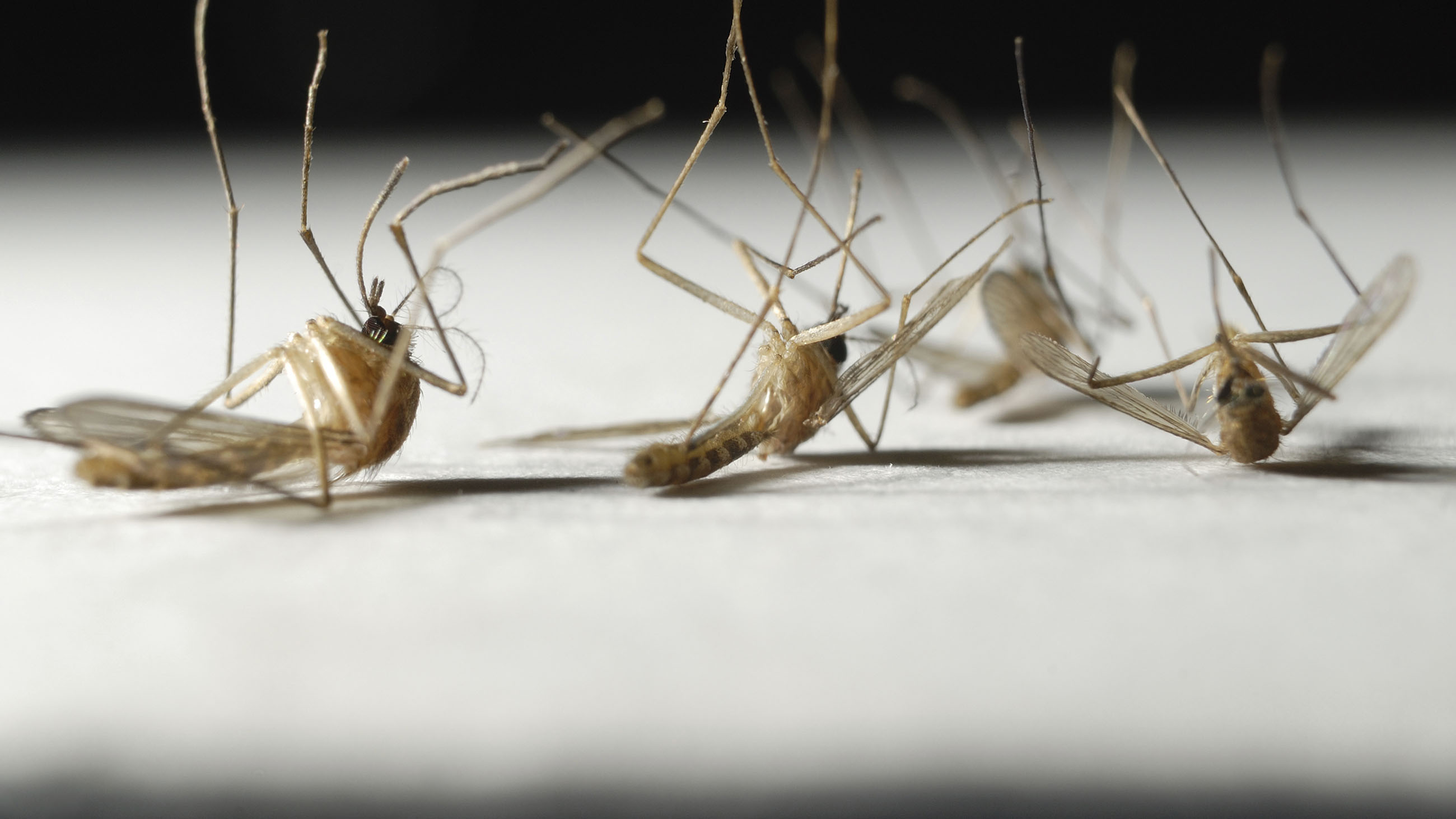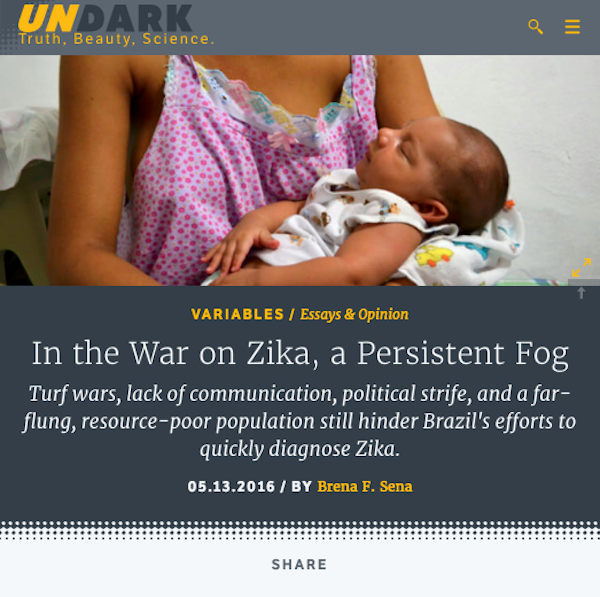The Allure and Folly of Specicide
Shortly after the Spanish-American War of 1898, in which yellow fever killed more American soldiers than those who died in combat, Army doctors identified the culprit — the Aedes aegypti mosquito — and set about exterminating it by draining its swampy breeding grounds in Cuba. In 1944, when the same mosquito infected soldiers with dengue fever during the invasion of Saipan, the World War II commanders took a more offensive approach, unleashing thousands of gallons of kerosene mixed with a then novel insecticide, DDT.
Over the centuries, people have come up with all manner of crude or clever weapons — from smears of alligator grease to the idea of a “colossal woven-wire screen as high as the Washington Monument” — to keep mosquitoes away from human hosts. Now, however, sophisticated biological strategies are emerging with the potential, according to some experts, to wipe an entire category of pests from the face of the earth. And the sudden, scary rise of the Zika virus in the New World is prompting calls to do just that.
Throughout its history, humanity has compiled a long list of reviled creatures, from cockroaches to coyotes, ticks to tsetse flies, that it has often wished — or actively sought — to send into oblivion. In the early twentieth century, Leland Howard, a entomologist with the U.S. Department of Agriculture, articulated the prevalent unease over the bloodsuckers frequently found atop that list: “The insect world is a menace to the dominance of man on this planet.”
In response to the latest calls for the mosquito’s eradication, researchers have unveiled promising new tactics that include male mosquitoes genetically engineered to interbreed with wild populations and produce offspring that will not survive. Oxitec, a British biotech company, has tested its modified mosquitoes across Brazil, Panama and the Cayman Islands. Each time, A. aegypti populations reportedly plummeted by more than 90 percent.
Jason Rasgon, an infectious disease entomologist at Penn State, said he sees “no downside” to the sterilization strategy that resembles successful efforts to eradicate the screwworm, a pest that once devastated the livestock industry. In March, the U.S. Food and Drug Administration released a preliminary finding that a trial release of the mosquitoes in the Florida Keys would pose no harm to humans or the environment. In fact, such new weapons sidestep the collateral damage inflicted by older ones; toxic pesticides released decades ago still linger in the environment.
“Technology is getting closer to allowing us to really play God,” said Michael Draney, a biologist at the University of Wisconsin-Green Bay. “We might not be able to do it now, but within decades I think it’s going to be quite easy to develop genetic techniques that can eliminate any animal species we want.”
But do we really want to obliterate any broad classification of animal, no matter how threatening they are to humankind? Such was the position of evolutionary biologist Olivia Judson, who famously called in 2003 for a mosquito “specicide” — an idea that acquired other supporters in subsequent years, and particularly now, amid the burgeoning Zika crisis.
But many scientists are repelled by this idea.
“This is another one of these knee-jerk reactions to a new public-health crisis that comes from some species we consider vermin,” said Rick Ostfeld of the Cary Institute of Ecosystem Studies in New York. Ostfeld’s research focuses on another disease-transmitting pest: the blacklegged tick, which carries Lyme disease. “It’s a mindset that is, unfortunately, very militaristic.”
The downsides of such an effort, Ostfeld and other researchers agree, are many. For starters, once humans have such a potent tool in hand, where do we draw the line?
“Who decides what species are targeted? Lice, locusts, houseflies, earwigs, rats — when do we stop?” asked Jeff Lockwood, an author and insect ecologist at the University of Wyoming. “I can’t imagine someone isn’t going to say, ‘Well, who’s ever benefited from cockroaches?’”
Truth is, we all probably have. Cockroaches can serve as food for birds and small mammals, and — when they aren’t crawling over your kitchen counter — some species eat rotting organic matter, releasing trapped nitrogen. That nitrogen, in turn, becomes fertilizer for a forest, keeping it healthy to do helpful things for us, like protecting water quality and reducing soil erosion. The loss of cockroaches and their poop, warned Srini Kambhampati, an evolutionary biologist at the University of Texas at Tyler, could bring dire consequences. “Very few organisms” specialize in feeding on wood, he said.
A similar case can be made for other animals we consider vermin. “Scorpions, venomous spiders and snakes play an essential service in keeping animal populations in check,” said Lorenzo Prendini, a curator at the American Museum of Natural History. The Lyme-transmitting black-legged tick may similarly balance ecosystems by controlling deer numbers, he added, while adult mosquitoes and their larvae contribute significantly to many food chains. Rasgon and others suggest that various critters might fill vacant niches, although no one can be sure. “Removing any species can be a dodgy thing,” added Prendini.
Pests may play an even more valuable role for the planet, saving wilderness from destruction by driving away humans who might otherwise exploit it. “Malaria has probably kept a lot of the Congo rain forest intact for centuries,” said Draney. The science writer David Quammen has called mosquitoes “nature’s Viet Cong.”
Similarly, the tsetse fly, which spreads sleeping sickness to people and cattle, might be called nature’s security guard. “If it wasn’t for the fly, people would’ve already moved cows into the savanna and gotten rid of lions, elephants, zebras and giraffes,” Draney said. “It would’ve been just like Texas.”
Preserved landscapes and biodiversity are a boon for public health. The more species there are, the more possible sources for future drugs and other medical discoveries. More trees store more carbon dioxide, slowing climate change — one of the phenomena that encourage the spread of Zika-bearing mosquitoes and other pests. International travel and shrinking margins between civilization and untrammeled wilderness are also at play, noted Laura Kahn, an expert in biodefense and pandemics at Princeton University. “Zika was first discovered in Uganda’s Zika Forest in the late 1940s. It had been there for a long time. We’ve obviously been doing something to enable these viruses to jump out of their natural environment and spread, but we’re not talking about that,” she said. “We need to figure out a more strategic approach that looks at the ecosystem of the planet.”
Even if we acquire the tools to extinguish pestilent species, success is hardly guaranteed. Unlike the dodo, the Tasmanian tiger and other animals that humans have unintentionally killed off, pests are almost by definition not easily eradicated. They rapidly reproduce and adapt to changing environments. Mosquitoes have been at it for millions of years; in recent decades, many have evolved to withstand our most potent munitions.
And even if the effort were successful, some experts say we might still fail in our chief pathogen-purging aim. A. aegypti and another mosquito species, A. albopictus, are both capable vectors of Zika, as well as dengue and chikungunya. Studies suggest that if we get rid of one species, the other might simply enjoy more human blood, noted Ostfeld. A strategy to inject mosquitoes with Wolbachia bacteria, which appears to limit their ability to transmit dengue, may enhance the insect’s propagation of West Nile virus, according to Rasgon’s studies. Research hints at similar dynamics for ticks, with various species serving as vectors for diseases including Lyme, babesiosis and ehrlichiosis. “One of the things we know about ecological communities is that interactions are complicated and cryptic,” said Ostfeld. “They only seem to reveal themselves when we mess up.”
Take, for example, early efforts to remove mountain lions, wolves and other predators from North America. It was widely perceived as a great idea at the time; now, in recognizing their ecological importance, people broadly support the animals’ return. An attempt in the West to control unwanted spotted knapweed during the 1970s also backfired, increasing the number of deer mice, a reservoir for the deadly hantavirus.
Lockwood warns of yet another reason to proceed very carefully with any battle plans: A pest might later be reintroduced, “whether by accident or by intention, through biological weapons,” to a population made more vulnerable by lack of exposure to it. Much like in a community where some parents refuse to vaccinate their children, fewer people with immunity means less protection against an advancing pathogen.
That’s not to say annihilation could never be defensible, added Lockwood. And in at least some cases, experts seem to agree that the repercussions would be negligible. Life would likely go on without bedbugs, which live almost solely among humans. Scientists recently decoded their genome, too. (Whether the mere annoyance they breed warrants wiping them out remains another question.) And Draney acknowledged that at least locally eliminating the invasive A. aegypti might make sense. But great caution is in order. As Lockwood put it, “We are operating from a position of great ecological ignorance… There’s almost certain to be some unexpected consequences.” If we aren’t careful, our hubris could come back to bite us.
Lynne Peeples writes about science, health and the environment from her home office in Seattle. She was the environmental health reporter at The Huffington Post for nearly five years, and her work has also appeared in Scientific American, Reuters, Popular Science, and Audubon Magazine, among other publications.
Note: This article has been updated to more precisely describe taxonomic ranks.











